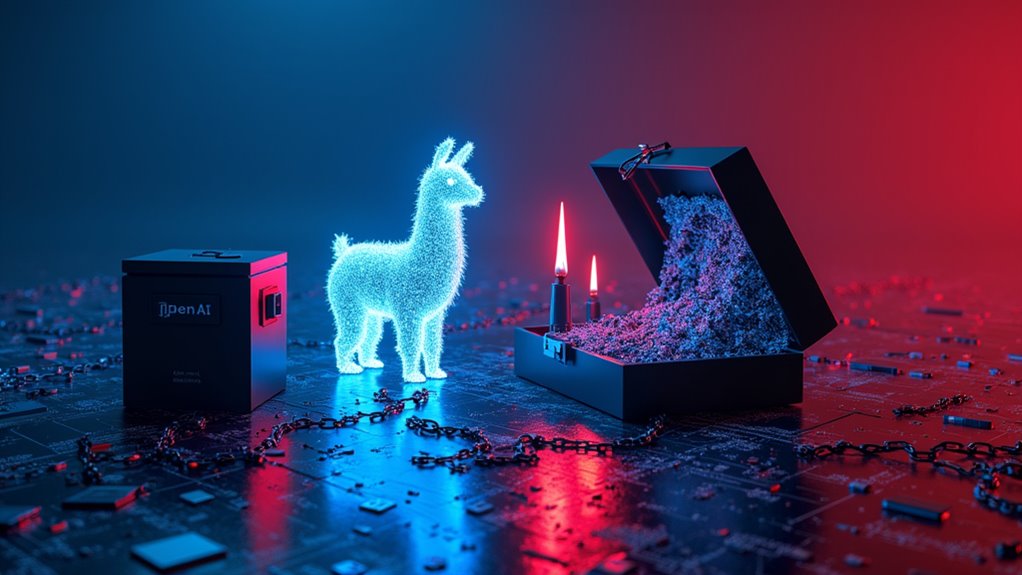Meta rolled up to LlamaCon and threw some serious shade at OpenAI’s gated GPT fortress, basically saying, “Hey, why pay when you can play for free?” Their Llama models are open-source, tunable, and work offline—no subscription tantrums here. Developers get creative carte blanche, like unlimited image generation, unlike OpenAI’s paid-only VIP lounge with usage caps. Sure, Meta’s move stirs privacy debates, but the gloves are definitely off. Curious what happens next in this AI cage match?
Even as the AI hype train barrels toward what feels like the inevitable robot uprising—or just a smarter to-do list—two tech giants, Meta and OpenAI, have staked out dramatically different territories in the rapidly evolving landscape.
As AI races ahead, Meta and OpenAI carve out rival empires in a landscape teetering between revolution and routine.
On one side stands Meta, launching its open-source Llama models (ranging from 8B to a jaw-dropping 405B parameters), practically daring developers to tinker, break, and rebuild. Across the ring, OpenAI’s GPT models—GPT-3.5 Turbo, GPT-4, and the new GPT-4o—operate behind velvet ropes, tightly controlled and cloud-only, no local installs allowed.
It’s the classic “everyone’s invited” hacker garage versus the members-only Silicon Valley club. Meta’s approach is audacious: free access, no subscriptions, and generous open-source licensing. Developers can fine-tune Llama for niche use cases, run it offline (if they’ve got the GPU muscle), and even shape it for metaverse ambitions. Notably, Meta utilizes LLaMA language models to improve natural language processing for various text-based tasks, aiming to set a new standard for open-source AI customization.
*OpenAI?* Sure, you can poke around—if you’re an enterprise or willing to pay the API toll. For the rest, tiered pricing and usage caps keep the party small, and customization comes with corporate strings.
When it comes to generative AI, Meta is tossing out unlimited image generations like Oprah handing out cars—meanwhile, OpenAI allots free users just two images a day, unless you pay up.
Meta’s focus on text-image creation fits its metaverse playbook: think AI-powered avatars, Instagram content curation, and AR/VR tools that make your digital self just a little more interesting. ChatGPT’s multimodal capabilities allow it to process not just text, but also images and voice, making it a versatile tool for both creative and analytical tasks. OpenAI, with its broader media ambitions, is adding real-time voice and video to GPT-4o, eyeing productivity, creativity, and enterprise automation.
But there’s a dark side to all this innovation. Meta’s cavalier data-gathering is raising eyebrows over digital persuasion and the Spectre of Big Brother 2.0. OpenAI, meanwhile, faces heat for its walled garden and what some call a “pay-to-play” future for AI.
The coming year promises more: Meta doubling down on metaverse-first AI, AR/VR integrations, and ever-faster Llama models; OpenAI churning out specialized GPT variants for every industry.
One thing’s clear—this isn’t just a tech rivalry. It’s a battle for who gets to write the rules of our AI-powered future.








